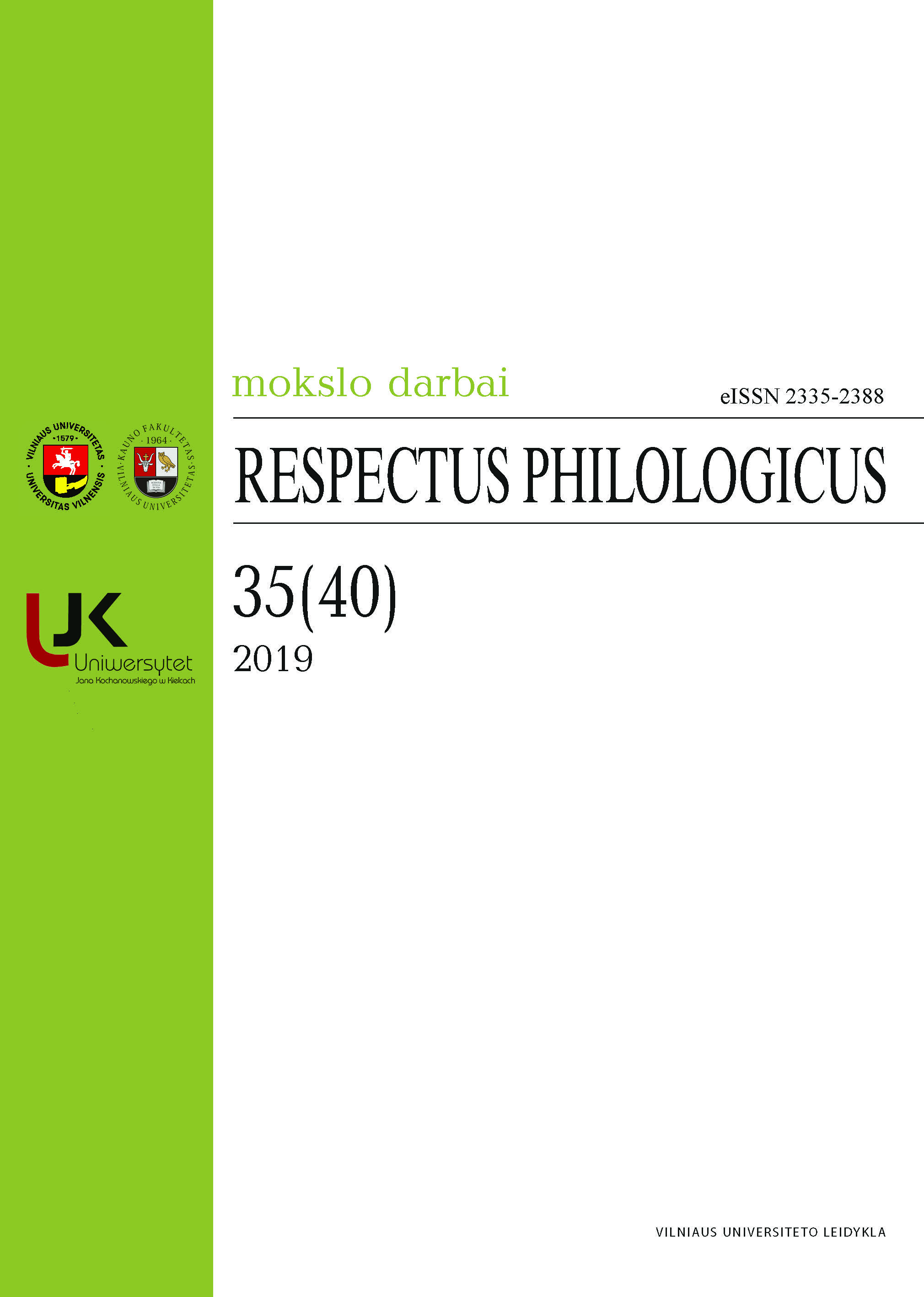Tarmiškumo bruožų nomenklatūra: nuo tarminių požymių prie tarmiškumo žymenų
Nomenclature of the Dialectal Attributes: from the Dialectal Features to the Dialectal Markers
Author(s): Danguole MikulėnienėSubject(s): Language studies, Phonetics / Phonology, Morphology, Sociolinguistics, Present Times (2010 - today)
Published by: Vilniaus Universiteto Leidykla
Keywords: Lithuanian dialects; traditional dialect; regiolect phonetic (phonological) features;
Summary/Abstract: Traditionally it is believed that the dialect first shows the person’s interrelationship with the place, i.e., where the dialect is spoken and from which it probably comes. Rapid changes in traditional dialects and the formation of regional dialects (or regiolects) are gradually changing the concept of dialecticism. It also incorporates a number of sociolinguistic variables, such as gender, age, education, etc. This article examines several fragments of sound-stimulus texts that have been developed during the project Distribution of Regional Variants and Quasistandard Language at the Beginning of the 21st Century: Perceptual Approach (Perceptual Categorisation of Variants), funded by the Commission of the Lithuanian Language (2017–2019, the head Prof Daiva Aliūkaitė). The aim is to systematically evaluate the more imperceptible dialectal features that are more difficult to identify by users of the language, which, even in the context of traditional (sub)dialects due to convergence, divergence or analogue alignment, remain in consumer language longest. It is they who are often the most important distinctive signs of regiolectity. In the first decades of the 21st century, when the regiolects and other larger formations were formed, the term of the dialectal features in traditional dialectology gradually replaced with the dialectal marker corresponding to it. They are not synonyms – the dialectal feature is stable, whereas the dialectal marker is a floating element of the local language. Moreover, it is less phonologically marked. In multimodal dialectology, phonological markers (or more precisely, their complete set) continue being important differential elements, but the value of morphological and derivative markers, in addition to phonological, clearly increases. Although the dialectal markers show the heterogeneous and multi-layer nature of the Lithuanian language landscape of the 21st century, they cannot be mechanically removed from the territory in which they occur. Thus, the sociogeolinguistic methods are necessary to be applied to conduct a more detailed analysis.
Journal: Respectus Philologicus
- Issue Year: 2019
- Issue No: 35(40)
- Page Range: 51-62
- Page Count: 12
- Language: Lithuanian

